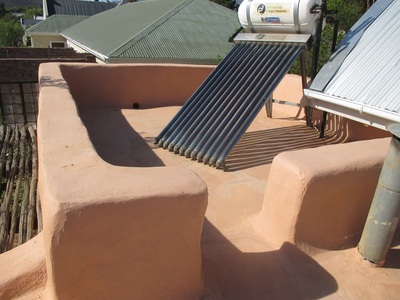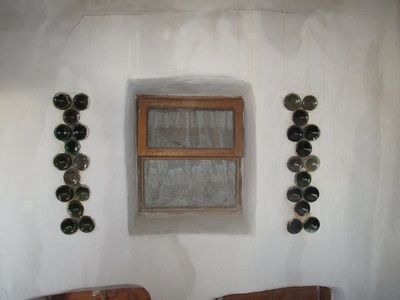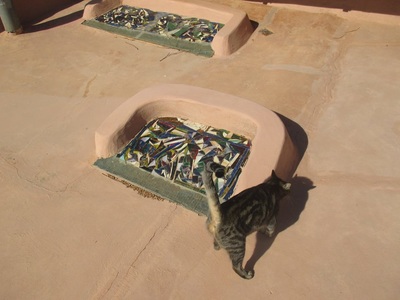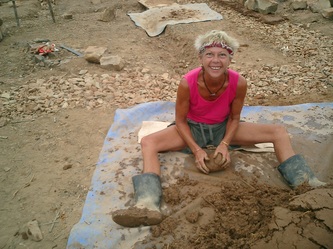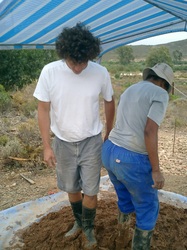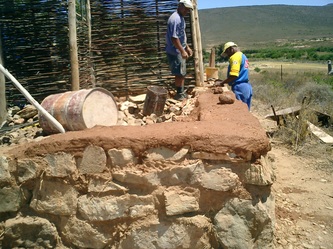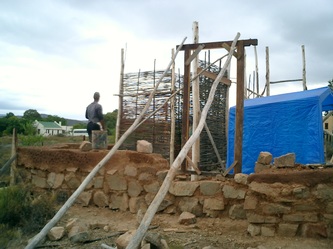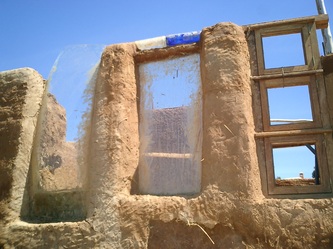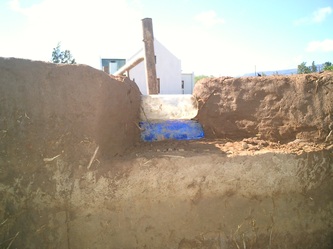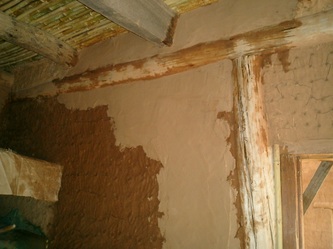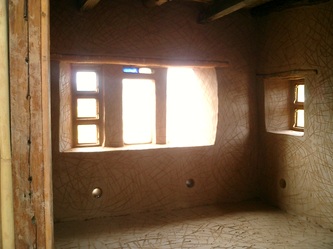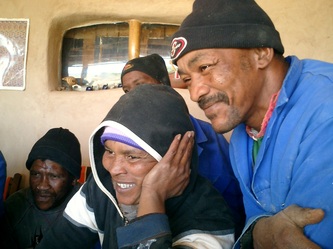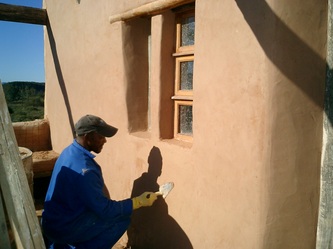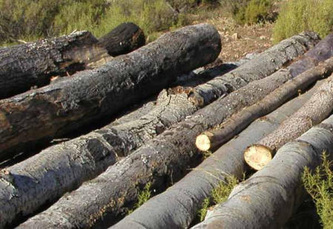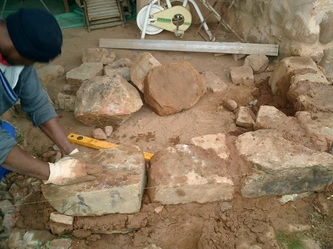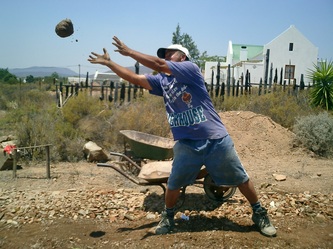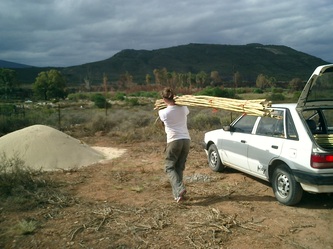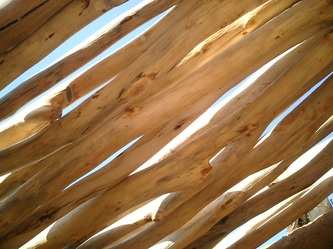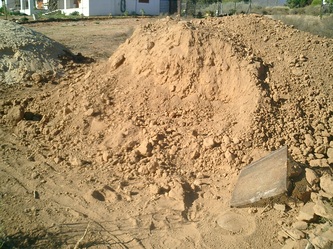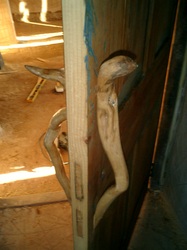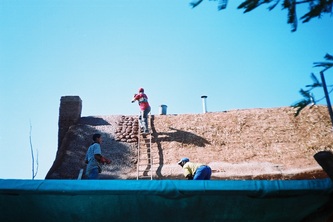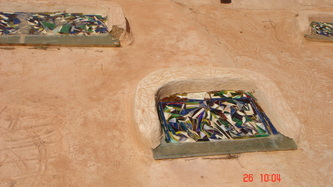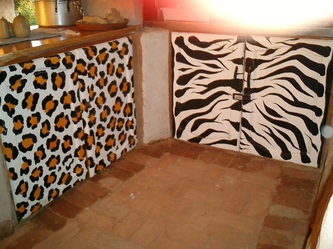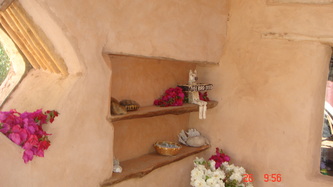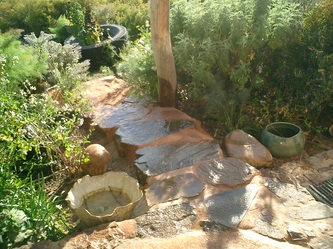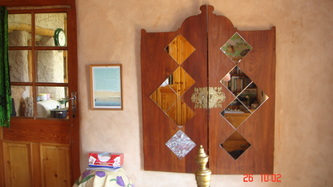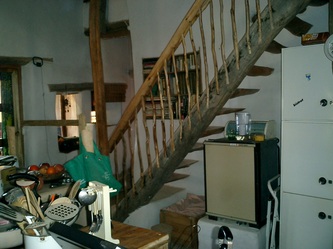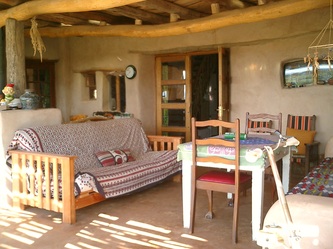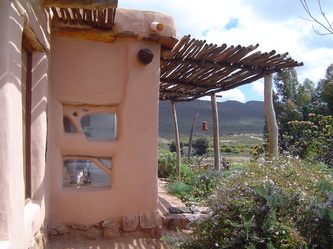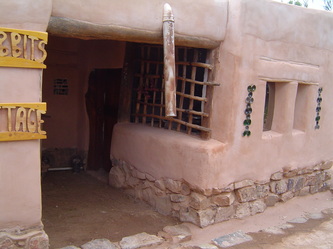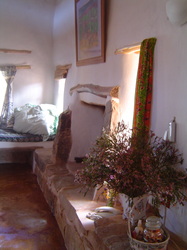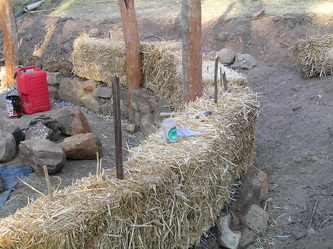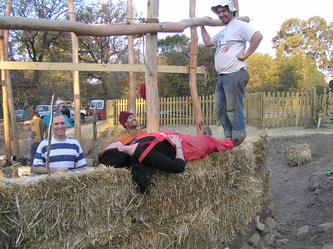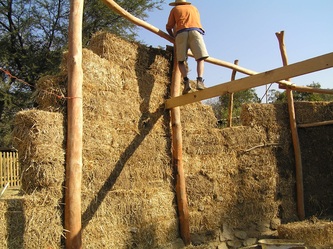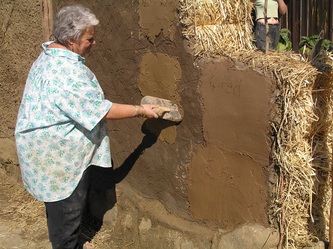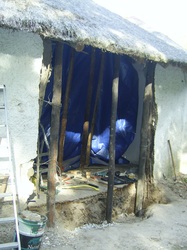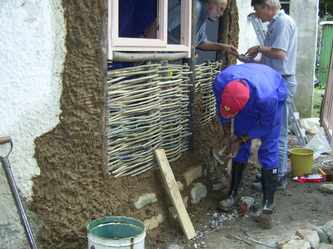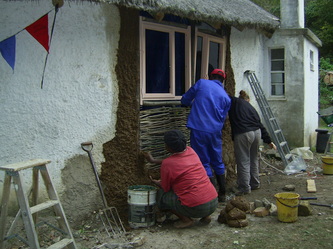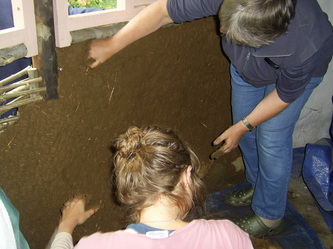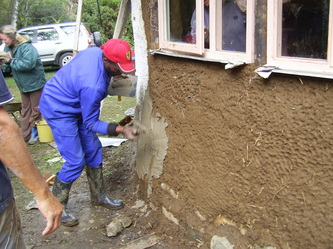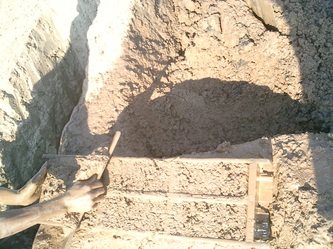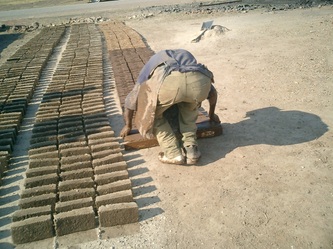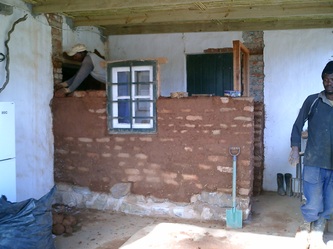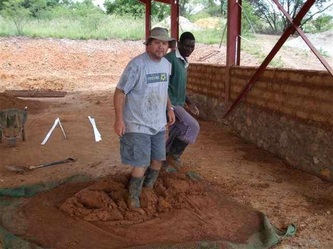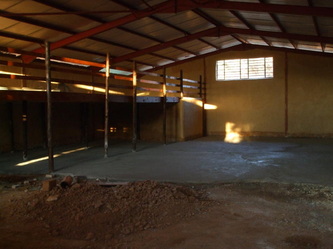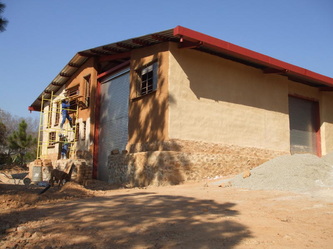The Dangerous Home.
How many of us think of our homes in terms of safety or hazardous, and I am not talking in terms of attacks from outside. Today the main concern around building one's home is, money and time. The modern house is not designed by the owner, and in fact the owner rarely has any input. Only we know which part of the house is most important for us, but today, we buy ready built, ready designed houses. “Our health is under threat from the constant and insidious pollution pervading the home, caused by the massive increase of chemicals and synthetic materials used everywhere. Many of the new chemicals and materials that have become so widespread in the modern home are only now making us aware of the “hidden costs” (health, climate) we are paying. We are daily spending more of our lives in artificial, possibly hazardous, and certain stressful, surroundings, removed and alienated from the more natural habitat the environment offers”
The Gaia Natural House Book by David Pearson.
But at the same time the environment is in danger of pollution from these same chemicals. Every time we use an aerosol, wash our dishes or clothes with chemical based detergents, washing ourselves or our hair, paint a room or buy over packaged goods, crease resistant fabrics, we are putting increased pressure on the earth.
We are also high consumers of energy, water and materials and then are very wasteful of them.
We need to become conscious of what we are doing and using and where we are disposing of what we consider waste. Relieving stress, instead of adding stress.
Safe House
Just recently two people made these two statements which set me thinking:
The difference between your house and others:
“The difference is that every inch of ur house was carefully composed, constructed and created; not just put up in shortest possible time. You create masterpieces, not just structures.” Barbara Hogan.
And secondly talking about Natural Houses:
“this is it, earth, river sand, lime, blood, sweat and happiness, hand made where the deepest part of your soul, enters the walls, and all the creations are yours.” Noel Jacobs
Chemical free recipes:
Deodorant: half and half Bicarb of Soda and I use Tapioca Flour as it is as soft as silk.
Toothpaste: Bentonite clay, coconut oil, Xylitol and peppermint oil/tea tree oil if you have bleeding gums or cavities. Experiment with quantities. I pour hot water into a jar, add the coconut oil so it softens and then the clay, Mix them together with the xylitol and peppermint oil.
General Cleaner: I put left over slices of lemon into a glass bottle and add vinegar leave a couple of days and you have a powerful general cleaner. If you need a stronger one use bicarb with it.
Use coconut oil as a base for oil, hand creams etc. I have made my own natural moisterizer for the last 40 years.
Today, there is much info on the internet on natural, and chemical free, have fun creating your own home and health.
The difference between your house and others:
“The difference is that every inch of ur house was carefully composed, constructed and created; not just put up in shortest possible time. You create masterpieces, not just structures.” Barbara Hogan.
And secondly talking about Natural Houses:
“this is it, earth, river sand, lime, blood, sweat and happiness, hand made where the deepest part of your soul, enters the walls, and all the creations are yours.” Noel Jacobs
Chemical free recipes:
Deodorant: half and half Bicarb of Soda and I use Tapioca Flour as it is as soft as silk.
Toothpaste: Bentonite clay, coconut oil, Xylitol and peppermint oil/tea tree oil if you have bleeding gums or cavities. Experiment with quantities. I pour hot water into a jar, add the coconut oil so it softens and then the clay, Mix them together with the xylitol and peppermint oil.
General Cleaner: I put left over slices of lemon into a glass bottle and add vinegar leave a couple of days and you have a powerful general cleaner. If you need a stronger one use bicarb with it.
Use coconut oil as a base for oil, hand creams etc. I have made my own natural moisterizer for the last 40 years.
Today, there is much info on the internet on natural, and chemical free, have fun creating your own home and health.
Our budding builders - (De Gaulle and Nardi have since gone on and with Nardi's family have created a business and they are repairing Clay brick houses)
2012 saw the start of the little miniature village at MAT.Following youth day where the children built a little house we decided to build a miniature village at MAT. With the help of Bruce Milne a local retired architect, who drew up the plans, and set the tone by asking the children "what is the first thing you do when you build a house?" And they answered you dig the foundations. To which Bruce replied : "No you first buy the land, and to buy the land you need money, and to get money you need a good job and to get a good job you need to be qualified. And t be qualified you need to work at school and get good marks.
Studying and exams and marks were discussed through out the project. One of the boys I am proud to say is going to register with Boland Collage to become a building inspector.
Armed with the plans Bruce showed us how to read them and how to lay out a house.
Studying and exams and marks were discussed through out the project. One of the boys I am proud to say is going to register with Boland Collage to become a building inspector.
Armed with the plans Bruce showed us how to read them and how to lay out a house.
And so over many Saturday mornings, Miniature Cottage grew along with the boys and their confidence. De Gaulle taught them how to plaster and Jon Oostendorf taught them to thatch. And now we have a beautiful little cottage in the garden and we have relaxed for the Holiday Season.
The boys learnt how to sieve the earth, identify the correct soil to use for cob, and to mix it. We started with the rock foundation like a full size house, Moving on to the walls, the door and windows are delivered and then built into the walls as they go up.
One half of the world's population approximately 3 billion people on six continents, live or work in buildings constructed of earth.
Sustainable Building/Natural Building
Natural building is about harvesting building materials from within a 5km radius, using recycled materials, instead of visiting the hardware shop or builders suppliers. Using no cement and as few as possible manufactured items. Using materials that don't contribute to global warming with their carbon footprint, by having a high manufacturing process. (It's actually about having a lot of fun with what is outside your back door)
COB is the basic material used in natural building.
BUILDING WITH COB. Cob-building requires mixing clay, sand and straw with water by stomping on it with either bare feet or wearing Wellington boots. When it has been thoroughly mixed into a dough-like consistency it is ready to be used for building walls, cupboards, etc. One simply takes the cob in one’s hands and places it on to the emerging wall. Lots of fun and easy to learn! The foundations of the wall are built with stone(footing). We then build up with cob, placing the door frames and windows as we build. To complete the walls we plaster with lime render. Lime is one of the world’s hardest and most endurable building material.
COB is the basic material used in natural building.
BUILDING WITH COB. Cob-building requires mixing clay, sand and straw with water by stomping on it with either bare feet or wearing Wellington boots. When it has been thoroughly mixed into a dough-like consistency it is ready to be used for building walls, cupboards, etc. One simply takes the cob in one’s hands and places it on to the emerging wall. Lots of fun and easy to learn! The foundations of the wall are built with stone(footing). We then build up with cob, placing the door frames and windows as we build. To complete the walls we plaster with lime render. Lime is one of the world’s hardest and most endurable building material.
Our challenge is to build using materials from ‘outside our back door’ and as little factory-produced material as possible unless it is recycled. We also use local sources (including our own land) for earth, clay and stones. We cut trees in the nearby forest, and our property, debark them and soak them in the river to wash the last of the sap out so they are then not susceptable to woodborer.. We buy used doors, windows, etc. at auctions, which are repaired and re-conditioned for use on our building, rather than using new wood. Many of the windows used are recycled motor car windows.
Using local and recycled materials
The beauty of building with natural materials is that if in a couple of hundred years no one has maintained the house it will simply return to the earth with only a couple of motor car windows and bottles left to be used by someone else.
STRAWBALE. This involves initially building a stone foundation for the walls upon which straw bales are then stacked and secured. A wooden framework used to support the roof , is constructed, the straw bales become infil. The walls are first plastered with an earth plaster (cob) and then with lime render.
WATTLE and DAUB. This structure is built with a wooden framework with thinner branches woven between the frames. The woven structure (usually wattle) is then covered with cob or earth (daub), leaving the frame work showing. This is then plastered.
ADOBE is the making of bricks from cob and then building in a masonary manner.

